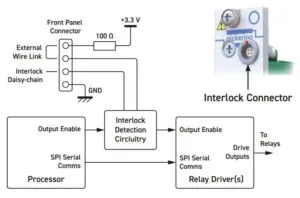40-230 is the PXI series, and 42-230 boards have a PXIe interface* – there are 70 board in total.
“The 40/42-230 programmable resistor module plays a role in simulating real-world resistive loads and fault conditions for devices-under-test such as electric vehicle power inverters, battery management systems and some aerospace components,” said Pickering. “The module allows engineers to emulate resistance sensor values, such as those from thermistors and RTDs, enabling safe testing without needing the actual sensor hardware.”
There are three types:
- Narrow resistance range (2 or 4 channels)
- Medium resistance range (1 or 2 channels)
- Wide resistance range (one channel)
“The PXI 40-230-210-HI and PXIe 42-230-210-HI are programmable resistor modules with four channels which can be set between 2.5Ω and 31.5Ω with 0.125Ω resolution,” according to the company. “40/42-230 is available in a variety of resistance ranges and resolution capabilities that meet the needs of most functional test systems. Each channel is able to simulate short or open circuit conditions that can be experienced in a system caused by faulty wiring or sensors.”
While the finest resolution types offer 125mΩ steps, types with 250mΩ, 500mΩ, 1Ω, 2Ω, 4Ω and 8Ω steps are available – coarse types offer wider resistance ranges.
The widest range types – single or dual channel – offer 8Ω steps from 4.5Ω to 76.8MΩ.
Connections are via a 22-pin rectangular female connector and part numbers are of the form: 42-230-xxx-HI. Mating high-voltage cables are available , and the full 1.2kV rating is only achieved with the connector mated.
A related range, limited to 1,000V, has a 9pin male D-type connector and similar part numbers, but with a CC suffix (ending …HI-CC).
 To increase safety, a daisy-chainable hardware interlock is available though a second connector.
To increase safety, a daisy-chainable hardware interlock is available though a second connector.
When activated, the interlock will return all relays to their default un-powered state (if none are jammed) and an error will be flagged via the software interface.
Companion software allows resistor value to be called.
“The module calculates the resistance setting closest to the requested value and sets that value,” said Pickering. “The user can then interrogate the module to find the actual setting used.”
Drivers are supplied for Windows, Linux and QNX.
Find the 1.2kV PXI and PXIe variable resistors on this Pickering web page
*42-230 types are compliant with PXIe 1.0, but without Local Bus, Trigger Bus and Star Trigger.

